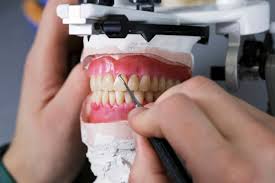The Importance of Quality Control in Dental Labs
In the present-day dental industry technology plays an essential part in increasing the efficacy, accuracy, and quality of dental labswork. From digital impressions to advanced technology, CAD/CAM has revolutionized the way dental labs operate, leading to improved outcomes for patients and simplified workflows.
One of the biggest advances is the application in digital prints. Traditional impression techniques often used messy, uncomfortable materials and were prone to inaccuracies. Digital impression systems use intraoral scanners to capture exact, 3D images of a patient’s teeth and gums. Digital impressions can be delivered directly towards dentists in the dental lab, reducing the chances of errors and the need for physical impressions. This does not only increase patient comfort but can also speed the process of making dental restorations.
Another breakthrough in technology is the integration with Computer-Aided Designs (CAD) as well as Computer-Aided Production (CAM) technology. CAD software allows dental technicians to design restorations such as crowns, bridges and dentures, with a high degree of precision. When the design is finished, CAM technology takes over to manufacture the restoration. By using the milling machine or 3D printer these systems produce top-quality dental items from a variety of materials, including ceramics as well as resins. This technology reduces the time required for production and ensures a high degree of accuracy.
3D printing has also been a game-changer in dental labs. It permits the creation of custom dental equipment such as orthodontic aligners and surgical guides. 3D printing offers flexibility in terms of design and materials, allowing for more personalized treatments and faster turnaround times.
In addition, digital workflow integration improves communication between dentists and dental labs. Digital collaboration platforms and cloud-based tools enable seamless sharing of data from patients and design files, facilitating better coordination and reducing the possibility of miscommunication.
In general, technology has revolutionized dental labs, making them more efficient and capable of producing superior results. As technology continues to improve, dental labs are likely to experience further improvements in precision, patient satisfaction, and overall effectiveness in dental treatment.
